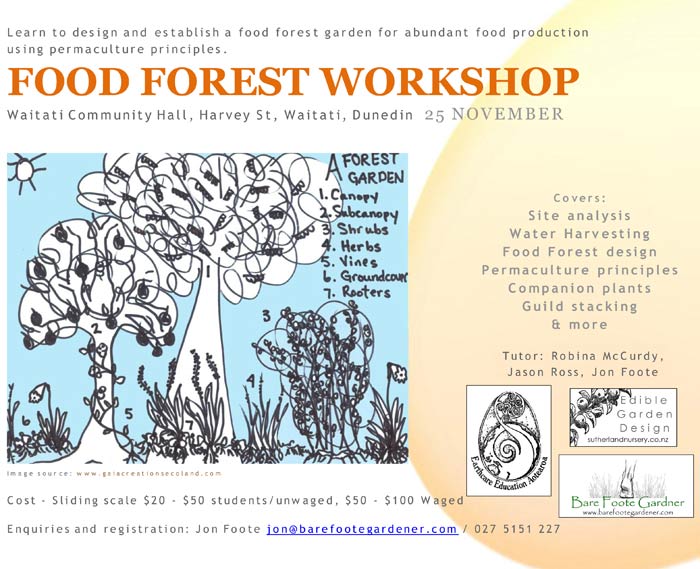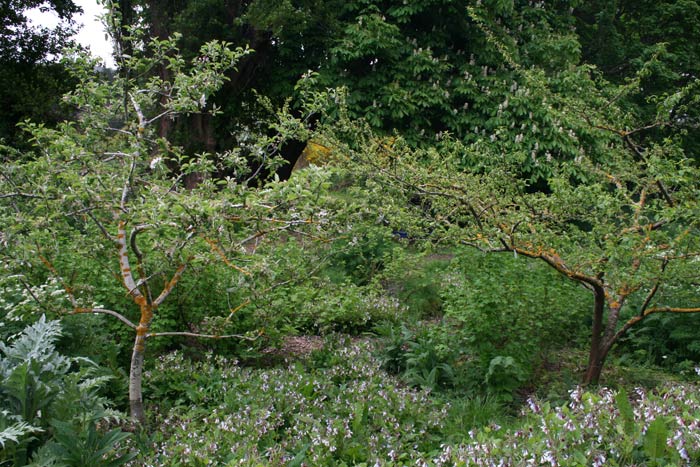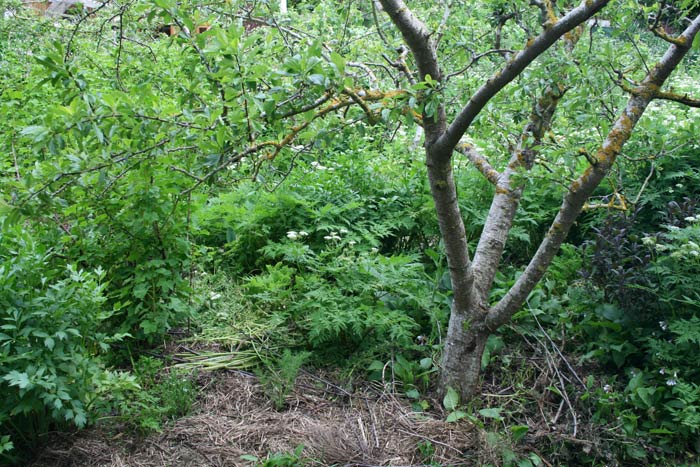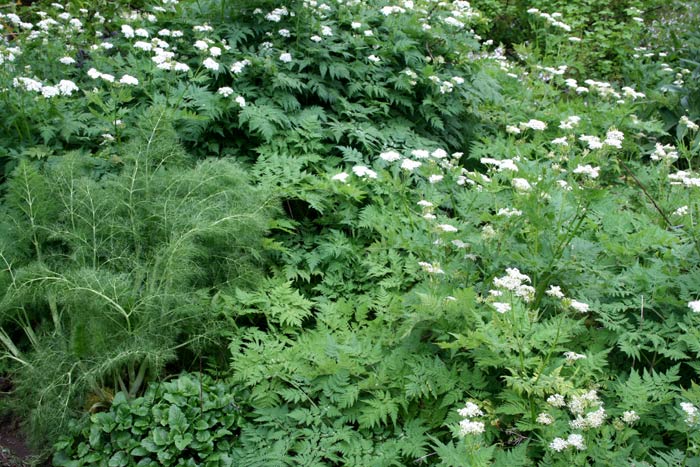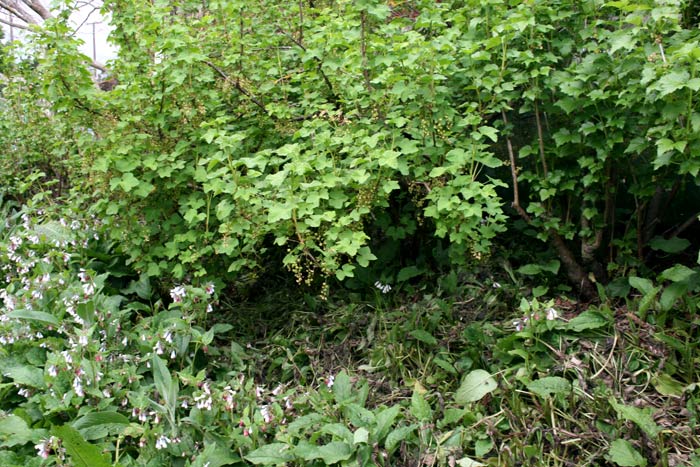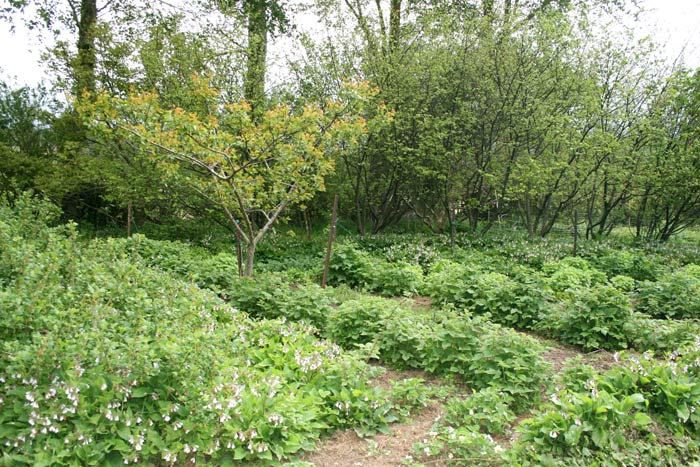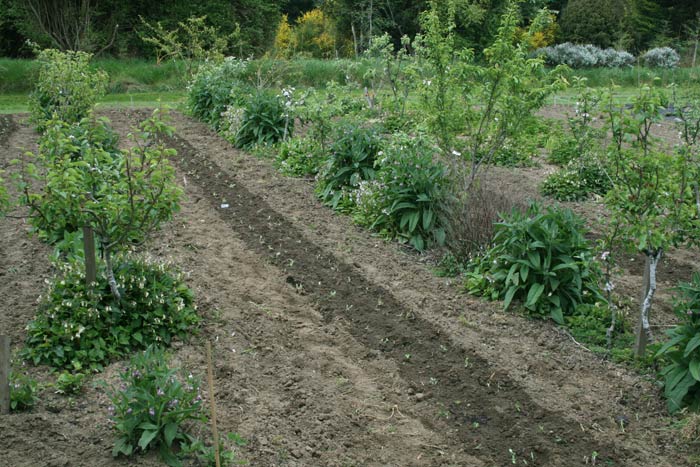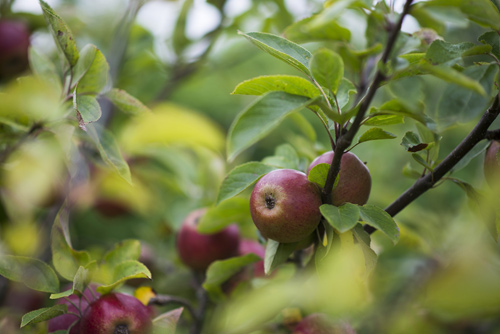 We have just thinned the very good fruit set of apples from the nursery cordon, otherwise it would have been very overloaded. This 7 year old espalier of 38 varieties of apples is where we get our cuttings (scion wood) from.
We have just thinned the very good fruit set of apples from the nursery cordon, otherwise it would have been very overloaded. This 7 year old espalier of 38 varieties of apples is where we get our cuttings (scion wood) from.
Early Summer Tasks in the Orchard
It is a beautiful time of year out in the orchard. We enjoyed some good conversation and garden tip sharing recently when we were out working in the Waitati Open Orchards. Here are a few tips for timely activities for early summer in the orchard.
- It is worth doing a quick pull up of the weeds that have taken hold in the spring flush from the mulch under your trees and bushes. Before they become monsters!
- Thin the fruit that has set, apples to about two fruits per cluster, take the centre ‘king’ out first. My big ‘Wilson’s Early’ plum set so much fruit last year I just shook it to thin the fruit.
- Thin new shoots on raspberries of both summer and autumn varieties.
- Summer pruning can start now; this is good for vigorous established plants, encouraging them to fruit. Take out young crowding growth that is not needed for new branches. Great for gooseberries, and over vigorous fruit trees, such as those out of control plums!
- Prep your strawberry beds with pine needles over compost. When they start running, ruthlessly take out any runners you don’t want for new plants, you’ll get a lot more fruit.
- Cover your fruit with bird netting, consider covering the lot from a permanent perimeter fence that can then contain chickens in the winter to weed and fertilise the area for you.
- Chop and drop the dynamic accumulator, nitrogen fixing, ground cover and companion herbs, such as sweet cicely and comfrey, under your fruits. This feeds the soil, keeps weeds at bay.
- Make a mix of vegetable and herb seeds and scattering them into gaps in the fruit, vegetable and even the ornamental garden. It is a pleasure to harvest the succession of abundance that follows. Try: daikon, rocket, mizuna, lettuce, carrot, silver beet, coriander, dandelion, miners lettuce, red Russian Kale, flat leaf parsley…
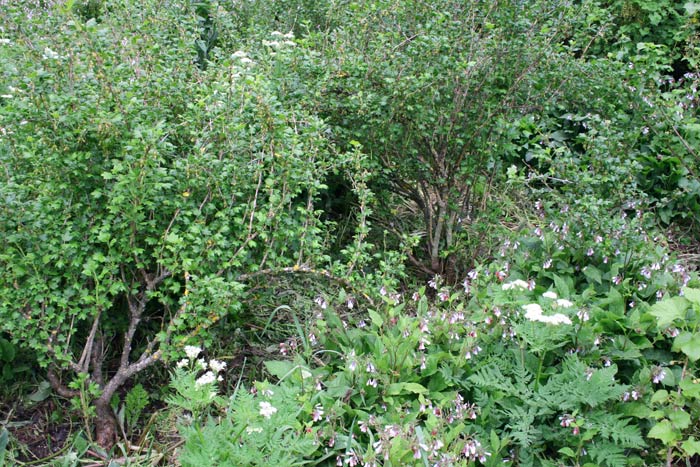 Old gooseberries with companion plants chopped and dropped beneath them to feed the soil.
Old gooseberries with companion plants chopped and dropped beneath them to feed the soil.
